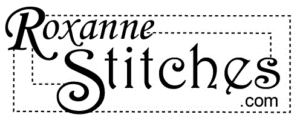Hi Everyone!! I’m back with a New Video lesson. This is another “by request” Video and demonstration on the Blind Hem Foot featuring the Singer Quantum Stylist 9960.
I hesitated to do this particular review and demonstration because I don’t actually use the Blind Hem Foot that came with the Singer 9960 when I do blind hemming.


The foot on the left is the Blind Hem Foot that came with the Singer 9960. The one on the right is an older Blind Hem Foot from another machine I own. This is the foot I use when I do my own blind hemming. Can you see the difference?? It’s the little extension on the plastic part of the foot on the right. This extension is missing for some reason on the foot that came with the Singer 9960.


This piece is clearly noted on the Blind Hem Foot D icon on the machine display when stitches #10 and #11 are selected. That little extension is even noted on pages 12 and 60 in the manual. So, I’m calling Singer customer service for an explanation on why the foot included with the foot package is different.
I’ve just passed the “being on hold for a half hour……Holding……Still 10 callers ahead of me. Now I’m sure you’re wondering, “Why the heck would you bother waiting all that time??” The reason is that when I finally do get through to speak to a person, their customer service is Excellent and I Love All YOU, my Followers!! So, I will wait…..There are 4 callers ahead of me. PROGRESS!!
This machine has 2 blind stitch options. While I wait, I will explain the difference between stitch #10 and #11. Stitch #10 is used when stitching a blind hem on a knitted fabrication. This is why there is a zigzag stitch between each jump/tack stitch. This will ensure a certain amount of “give” in the area where this stitch is used to accommodate a knit. Stitch #11 has a straight stitch between the jump/tack stitches because it’s designed to be used on a woven fabrication that doesn’t have stretch.
Still holding…..just passed the one hour mark, but only 2 callers ahead of me!! Finally….Now at the 1 hour 15 minute mark….1 caller ahead of me!! I’m NEXT!! Good thing I have a speaker phone so I can keep on working.
The most important thing to know when preparing to do a blind hem is how to fold the fabric to work with the blind hem stitch. I’m using a poly/cotton woven fabric for my demonstration. Fold and press the hemline in place with the garment inside out and facing away from you. Pick up all layers and make a narrow fold near the serged hemline edge. Turn the fabric vertically and stitch. This process is detailed in the video.
Woot! I made it. 1 hour and 25 minutes. I’m now on the line with Donna. I’ve asked for her to check her blind hem foot so she’s placed me on hold while she gets the machine and blind hem foot. This is why Customer Service takes so long, folks. Their reps go and get the machine and accessories you’re inquiring about to answer your question thoroughly.
After more than 2 hours of waiting and holding I finally got an answer as to why the blind hem foot is different from what is pictured in the manual and what the machine display icon shows. They directed me to page 8 in the manual that states they reserve the right to change the design of the sewing machine accessories when necessary. I’m paraphrasing a lot of words that are written there. Basically, they decided that they would substitute this foot without that extension to make the foot more versatile for other sewing operations. They feel that this new foot will also be able to fulfill sewing operations like 1. Blind Hemming, 2. Applique and 3. Stitching in the ditch. This explanation seemed reasonable to me, however I do still feel that my older foot with the extension is the one most suitable for blind hemming.
TIP: I use a fine monofilament thread, threaded as my top thread and wound onto my bobbin for a more invisible look when blind stitching.
I know this was a bit of a saga, but I appreciate all of your feedback and requests for demonstrations and following along with my videos. I was personally interested in knowing why that foot was different from the way it was pictured in the manual and now we all know. This substitute foot is certainly usable, just not by me. You can make your own decision whether or not you want to use it or invest in another foot for blind hemming which should be a minimal expense. Needless to say, installing the foot, setting up the stitch, preparing the fabric and the sewing are all the same regardless of which foot you choose to use.
I hope you’ll find this information and video helpful.


I haven't used the BHF yet on my 9960 so I didn't notice there was a substituted foot. Good to have pointed it out for us. I prefer the older foot and am going to check around for one. Thanks for great info always.
Thanks!!
I used the BHF for doing a fake serge (over-locking) stitch. It worked wonderfully as it allowed me to adjust the edge distance.
That's the great thing about specialty feet. They can be used for more than one sewing operation. Good for you!